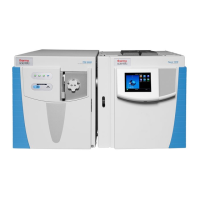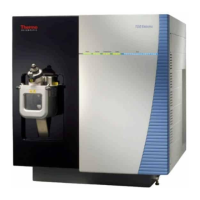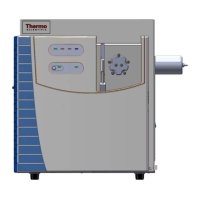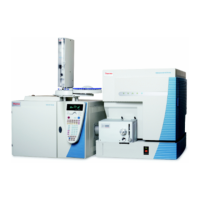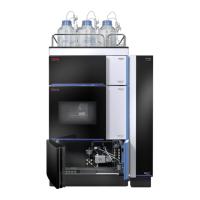
Do you have a question about the Thermo Scientific TSQ Fortis and is the answer not in the manual?
| Brand | Thermo Scientific |
|---|---|
| Model | TSQ Fortis |
| Category | Laboratory Equipment |
| Language | English |
Explains the MS system composition including API source, ion optics, mass analyzer, and detection.
Describes how ion optic assemblies and mass analyzer assemblies control ion paths.
Details the function of forepumps and turbomolecular pumps in the vacuum system.
Introduces the components of the API source interface within the vacuum chamber.
Explains the function of the ion transfer tube in desolvating and transferring ions.
Describes the RF and exit lenses' role in ion transmission and focusing.
Details the MP00 RF lens and L0 lens for guiding ions.
Explains MP0 ion optics and the beam blocker for transmitting and filtering ions.
Describes the ion detection system including conversion dynode and electron multiplier.
Provides steps to turn on the MS using the Tune window.
Guides on how to put the MS into standby mode for short-term inactivity.
Details the emergency shutdown procedure using the main power switch.
Outlines the complete shutdown procedure for extended periods or maintenance.
Explains procedures for restarting the data system using Windows or power button.
Describes how to reset the MS using the communication panel reset button.
Details the procedure for achieving sufficient vacuum after shutdown.
Outlines essential tasks to ensure the MS is ready for operation.
Describes how to detect and resolve air leaks in the vacuum system.
Explains how to check vacuum pressure readings in the Tune window.
Lists tasks to perform after operating the MS to prevent downtime.
Provides steps for flushing inlet components with cleaning solutions.
Guides on placing the MS in standby mode after daily maintenance.
Details the connection of sample flow to H-ESI or low-flow H-ESI sources.
Explains how to connect sample flow to the APCI spray insert.
Guides on preparing the syringe pump for infusing calibration solution.
Outlines the procedure for successful MS calibration and tuning.
Details how to optimize MS parameters in the Tune application's optimization pane.
Details SRM scan type for monitoring specific precursor/product ion transitions.
Provides steps to acquire sample data using the Tune application.
Details acquiring sample data using the Xcalibur data system.
Provides steps for removing specific lenses for Altis/Quantis models.
Details the procedure for removing lenses from the Fortis model.
Explains cleaning procedures for RF lens, exit lens, MP00, and L0 lens.
Details removing ion sweep cone and ion transfer tube to clean blockages.
Outlines cleaning procedures for the ion transfer tube.
Provides steps for setting up the syringe pump for sample infusion.
Guides on setting up H-ESI and low-flow H-ESI direct infusion.
Explains high-flow infusion using an LC Tee union and syringe pump.
